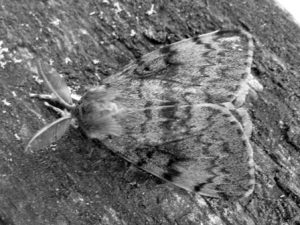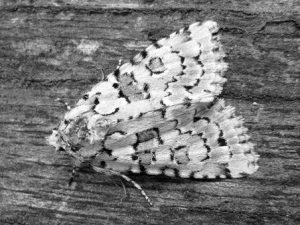(November 2016) Sibford Moths

 Having been running a moth trap in my garden throughout 2016 I thought it might be worth sharing some of the results. To date (10th October) I have put the trap out on 100 occasions and have caught a total of 7687 individual moths of 333 different species (221 macro moths and 112 of the generally smaller micro moths). Records are submitted to both the County Moth Recorder and the National Garden Moth Scheme.
Having been running a moth trap in my garden throughout 2016 I thought it might be worth sharing some of the results. To date (10th October) I have put the trap out on 100 occasions and have caught a total of 7687 individual moths of 333 different species (221 macro moths and 112 of the generally smaller micro moths). Records are submitted to both the County Moth Recorder and the National Garden Moth Scheme.
As well as catching 5 species of the large and spectacular hawkmoths (Poplar, Privet, Eyed, Elephant and Small Elephant) there have been a number of other notable catches.
On the 8th July I caught an interesting looking micro moth which turned out to be Grapholita lobarzewskii . Like many micros it does not have an official English name but is sometimes referred to as the Kent Fruit Piercer. There are not a lot of records of this moth in the UK and this was the first record for Oxfordshire.
Another first for Oxfordshire was a Gypsy Moth caught on 5th August. This species used to occur commonly in East Anglia but became extinct in the UK in the early 1900s. Recently populations have become established in the London area and around Aylesbury. Because it is considered a pest species in parts of the continent, Defra attempted (unsuccessfully) to exterminate the London populations. The females of the species are heavy and reluctant to fly so the moth spreads to new areas by means of small larvae attached to silken threads being blown on the wind.
A third species of interest is the Marbled Green. Unlike the others this is certainly not a pest species. The larvae feed on lichens on rocks and walls and the adults are camouflaged to blend in with the lichen covered surfaces that they sit on by day. When I caught a single specimen in August 2015 it was considered a good record. During July and August 2016 I have caught another 36 including 12 in a single night suggesting that there is a well-established population in the Sibford area. This used to be considered a species confined mostly to the coasts of South and South-West Britain but unlike many species of butterfly and moth appears to be increasing its range.
Once they have been identified and a photographic record kept, the moths are released unharmed.
Andy Newbold